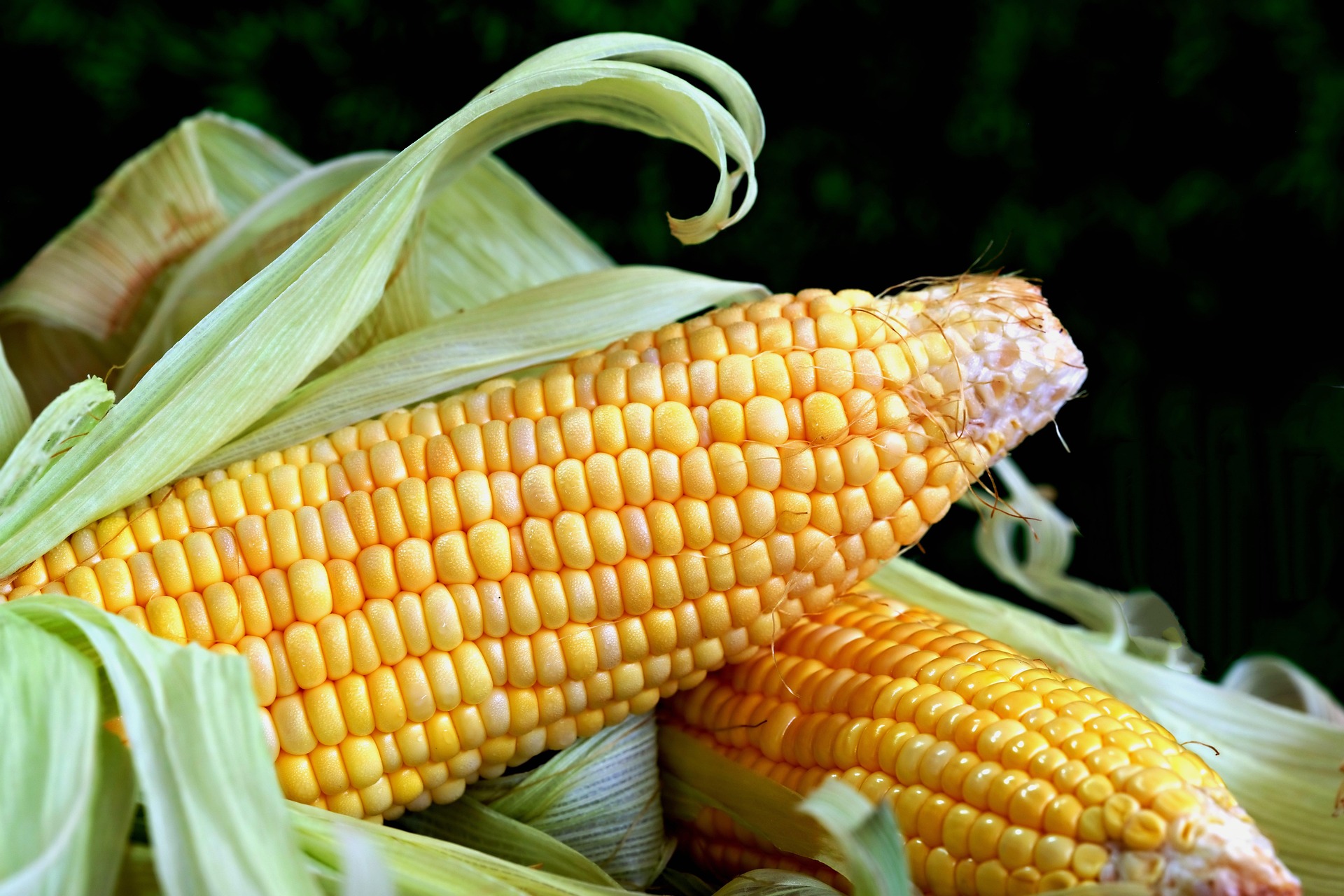Hello again, pet parents! Alex Rivera here, your veterinary nutritionist from California. If you’ve ever glanced at the ingredient list on your dog’s food bag, chances are you’ve seen corn listed in one form or another. It’s one of the most common ingredients in commercial dog foods, yet it’s also one of the most debated!
In my three years of practice, I’ve had countless conversations with concerned owners asking, “Is corn really okay for my dog?” With my own German Shepherd, Rust, relying on a balanced diet for his energy and health, it’s a topic I take seriously. A well-chosen diet is a fundamental part of creating a loving and pet-friendly home environment.
So, let’s dig into the facts about corn. Is it a nutritious ingredient, a problematic filler, or somewhere in between? The truth is, like many things in nutrition, it’s not a simple yes or no. For many dogs, corn, when properly processed and part of a complete and balanced diet, can actually be a beneficial ingredient.
What exactly is “corn” in dog food?
When we talk about corn in dog food, it’s usually not the sweet corn on the cob you might enjoy. It typically appears as:
- Cornmeal or ground corn. The entire corn kernel ground up.
- Corn gluten meal. A protein-rich byproduct of corn processing.
- Corn germ meal. Derived from the corn germ, offering protein and some fats.
These ingredients are primarily sources of carbohydrates, but they also contribute protein, fiber, and some essential nutrients. Understanding pet food ingredients is key, much like knowing what goes into your cat’s space is covered in our cat litter box tips: Dos and don’ts of litter.
The nutritional upside: What corn can offer
When processed correctly, corn can provide several nutritional benefits for your canine companion:
- Energy source. Corn is a good source of carbohydrates, which are broken down into glucose, providing readily available energy for your dog’s daily activities. In fact, carbohydrates from sources like properly cooked corn can make up a significant portion of the energy in many quality dry dog foods.
- Protein contribution. Corn gluten meal, for example, is relatively high in protein and can contribute to the overall amino acid profile of a food, though it doesn’t replace the need for high-quality animal protein sources.
- Digestible fiber. Corn contains dietary fiber, which aids in healthy digestion and can promote good stool quality. If you’re looking to understand more about this crucial nutrient, our article on how to add fiber to your dog’s diet is a great read.
- Essential fatty acids. Corn contains linoleic acid, an omega-6 fatty acid that’s essential for healthy skin and a vibrant coat. A good diet is a cornerstone for avoiding issues like those detailed in how to spot and prevent common skin issues in dogs.
- Vitamins and antioxidants. It provides some B vitamins, vitamin E, magnesium, phosphorus, and antioxidants like lutein and zeaxanthin, which support overall health. Proper nutrition even plays a role in how active your dog is, which you might monitor using tools discussed in smart collars in pet care.
Addressing common concerns and myths about corn
Despite its nutritional contributions, corn often gets a bad rap. Let’s tackle some common myths:
- Myth: “Corn is just a cheap filler.” — Alex’s take. While corn is a cost-effective ingredient for manufacturers, labeling it just a filler is misleading. As we’ve seen, it provides valuable nutrients and energy. The key is the overall balance of the diet and the quality of all ingredients. It’s not about one ingredient in isolation.
- Myth: “Dogs can’t digest corn.” Alex’s take. This is a common one! Domestic dogs have evolved significantly from their wolf ancestors and possess the enzymes needed to digest cooked starches, including corn. When corn is properly cooked and processed (as it is in most commercial dog foods), it’s generally quite digestible for most dogs. Individual sensitivities can exist, of course, just like with any ingredient.
- Myth: “Corn causes allergies in dogs.” Alex’s take: While food allergies in dogs are real, corn is not one of the most common culprits. True food allergies often point towards protein sources like beef, dairy, chicken, or wheat. A dog can be allergic to corn, but it’s less frequent than generally perceived. If you suspect an allergy, a proper elimination diet trial guided by your veterinarian is the best diagnostic approach. Sometimes, advanced tools like AI in veterinary diagnostics can help pinpoint complex issues if your vet suspects something more than a simple dietary sensitivity.
I remember when a client was convinced corn was making their Labrador itchy. We did a careful dietary review and elimination trial, and it turned out to be a sensitivity to a specific meat protein! It highlighted how important it is not to jump to conclusions about ingredients like corn. For insights on other plant-based ingredients, you might find our article “Can dogs eat beans? A vet nutritionist’s guide to dogs and legumes” interesting.
When might corn not be the best choice?
While generally fine for many dogs, there are situations where corn might not be ideal:
- Confirmed corn allergy or sensitivity. If your dog has a diagnosed allergy or intolerance to corn, you should obviously avoid it.
- Diets with very high corn content. If corn or corn byproducts dominate the top of the ingredient list at the expense of high-quality animal protein sources, the overall nutritional balance might not be optimal for all dogs, especially highly active ones like my Rust, or those with specific protein needs. The quality and digestibility of the protein sources are key.
- Individual preference or specific dietary goals. Some owners simply prefer diets with different carbohydrate sources, and that’s perfectly okay as long as the chosen diet is complete, balanced, and meets their dog’s needs. Good grooming is also part of overall health; see the importance of regular grooming for your pet’s health.
Can my dog eat corn on the cob or popcorn?
- Corn on the cob. While dogs might enjoy chewing on it, the cob itself is a serious choking hazard and can cause intestinal blockages if ingested. It’s best to avoid giving cobs to your dog. Cooked kernels off the cob, given plain and in moderation, are generally safe.
- Popcorn. Plain, air-popped popcorn (no salt, butter, oils, or other toppings) can be a fun, low-calorie treat for dogs in small amounts. Just make sure there are no unpopped kernels, as those can be a hazard too. A few pieces of plain popcorn can be a safer treat than many human snacks, and good treats play a role in your dog’s overall happiness and dental health, a topic related to our guide on how to keep your dog’s teeth clean at home.
Making safe choices about treats and chews is as important as choosing safe toys for your pet. And as pets age, their needs change, which you can read about in resources like grooming and bathing older cats (many principles apply to senior dogs too!).
The bottom line: Corn in context
So, is corn good for your dog? In many cases, yes, it can be a perfectly healthy and beneficial part of a complete and balanced diet when properly processed. It provides energy, fiber, and essential nutrients. The negative reputation it sometimes carries is often due to misconceptions or an oversimplification of canine nutrition.
The most important factor is the overall quality and balance of your dog’s entire diet, not just one ingredient. Always choose a food that is appropriate for your dog’s age, breed, activity level, and any specific health needs. Look for the AAFCO nutritional adequacy statement on the bag. If you’re unsure about your dog’s diet or if they have specific health concerns, it’s always best to consult with your veterinarian. They can provide personalized advice, and options like telemedicine in veterinary care can make these consultations more accessible.
Remember, a healthy diet contributes to your pet’s overall well-being, which includes everything from their energy levels to the condition of their coat, something you might observe during routine care, like when you clean your pet’s ears safely at home. Even basic care, like knowing how to safely trim your dog’s nails at home fits into this holistic view of pet health.
Don’t let myths scare you, but always prioritize a balanced approach and professional advice!
To your pet’s health,
Alex Rivera, Veterinary Nutritionist.

Alex Rivera, a veterinary nutritionist with 3 years of experience in the field. Owns 5 pets of his own; a Burmese python (named Venim), a german shepherd (named Rust), two parakeets (named Whistle and Roberts), and a bengal cat (named Breene).
